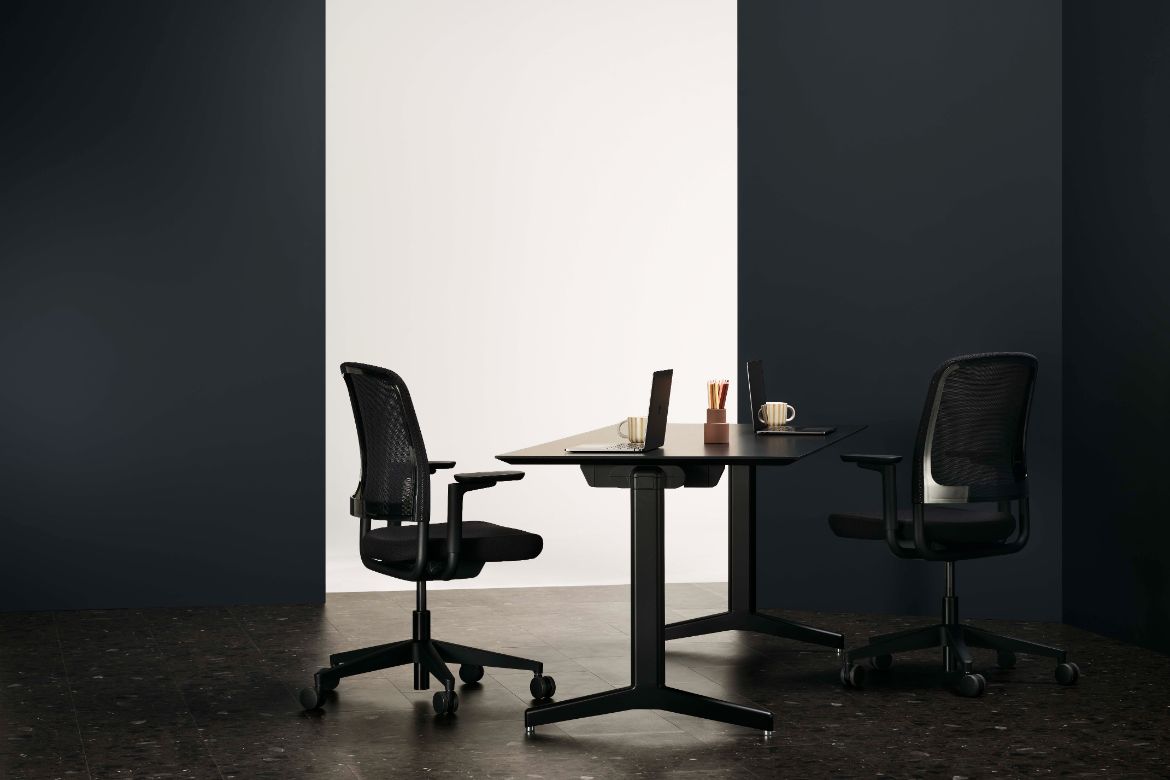
Kissen table with Denn chairs. Photography: Haydn Cattach.
-
23 August 2023
One of the highlights at the 2023 INDE.Summit on 9th August was a conversation between Jan Henderson and Oliver Field, Creative Director, Zenith Design Studio.
Among the nine panel sessions, there was a chance to investigate how Zenith, the 2023 INDE.Awards Platinum sponsor and supporter of The Best of The Best category, is addressing critical issues today, with a firm grip on the requirements of tomorrow.
The session titled, Designing for a Better Life, was the last session of the day and encapsulated the ways that Zenith conducts best practice when designing and manufacturing products that can help support and enhance our lives, health and wellbeing.
Here is a snapshot of the interview.
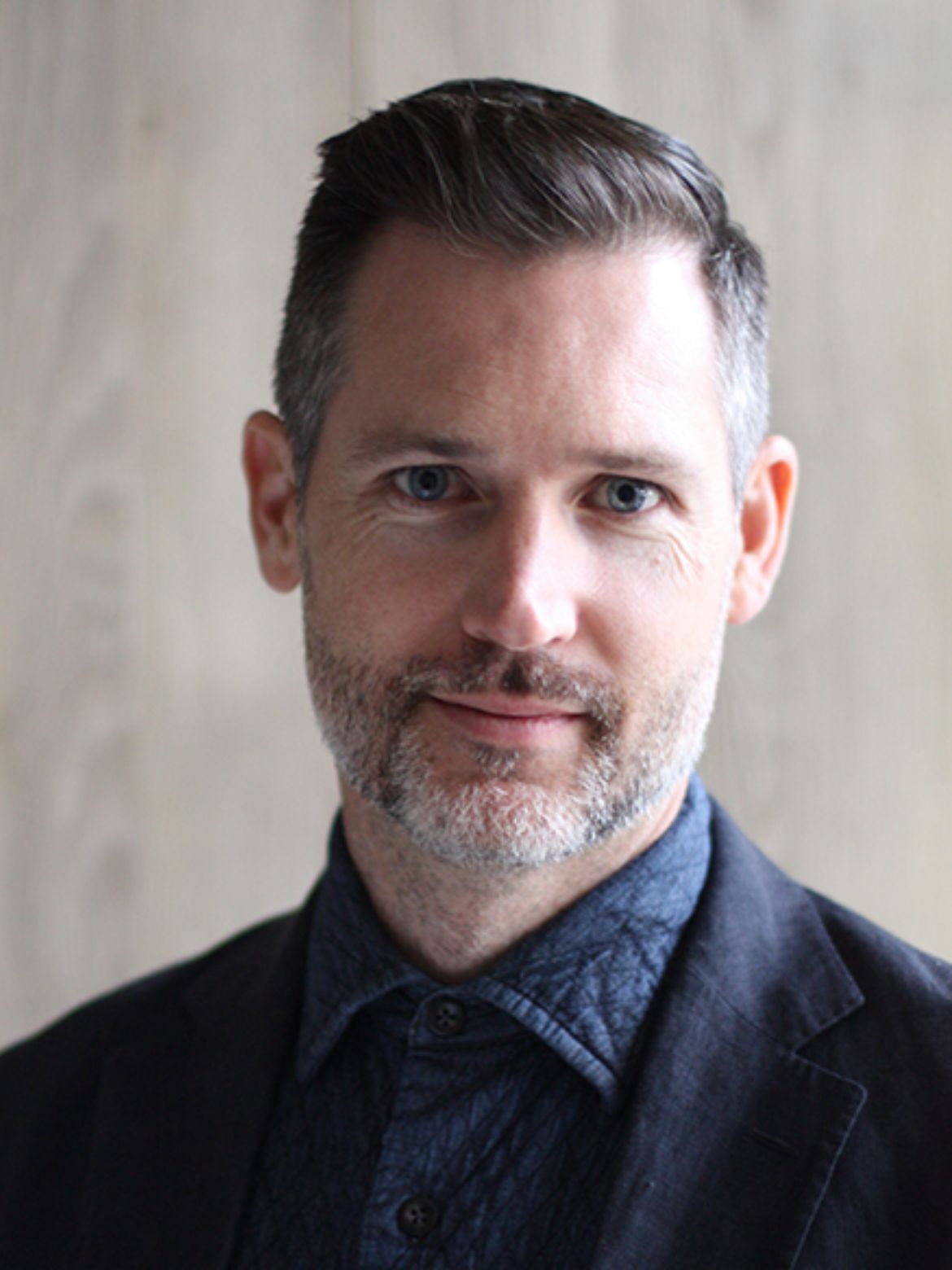
Oliver Field. Image courtesy of Zenith.
Jan Henderson: To define our topic, what does Designing for a Better Life mean to you?
Oliver Field: Designing for a better life is a deep topic for me because I think it hits a nerve of why I love what I do, it’s all about people. I am in the business of making things, so for me, the objects and experience we create have the potential to have a positive impact on so many different lives along the journey. I think of the person on the factory floor who puts the components together, and the installer onsite, and of course the occupants in the workplace who come to work and use our furniture. The idea that our design decisions can have a big impact on so many lives throughout the life of a product is something I take very seriously.
At Zenith we work on such a broad range of products, we are constantly thinking about how our products can make a better life in so many ways.
JH: Zenith is well-known for tables and desks but can you take me through other products and collections and what the design drivers for these are?
OF: Today, after launching three products over the last couple of months, we have 21 projects currently in various stages of development. We actively work within six core workspace categories. These cover products such as rooms within rooms, agile furniture, loose furniture and seating, tables, and desking, connected systems and, most recently, joinery.
We strongly believe in product families. This is very important to us, to ensure each new design can be used in multiple ways across a floor plan while maintaining a singular design language. This is a very powerful sales tool because we can really tailor the system to align with the spatial and the visual design aspirations.
Our Kissen collection is a great example of this approach. The design driver for Kissen was to visually soften the workplace. We created a table leg design that features curves and soft lines, but we engineered it in a way that did not limit it to just tables. The collection can be used in many ways, the form adapts equally for a fold table, a large format meeting table, a workstation and is available in both solid timber and powder coated aluminium. Clients love this, they can use the same design language for the conference rooms, their breakout spaces and for their focus spaces.
Another example is our soft seating. Again, tapping into the theme of softening the workspace, this is about creating alternative workspaces compared to the traditional desk and table. These systems have become more complex from a modularity perspective but also from a technical perspective. Our Precinct seating, for example, features integrated power, tables, privacy screening and many ottoman shapes which can be used to create dynamic workspaces. Our clients love the way these products can be configured in a way that also aligns with how people want to work and move within the space.
It’s not just seating and tables that we apply this systems design approach. We are heavily invested in the connected workspace. We have created a whole design category we call Zenith Connect. We are building a platform of digital products that work together and link all our products. We have developed our own handset controller for our height-adjustable desks, and a new in-desk puck which connects to the FloorSense booking system. With this digital family, we can connect our desks, our meeting rooms, and our loose furniture in a seamless experience.
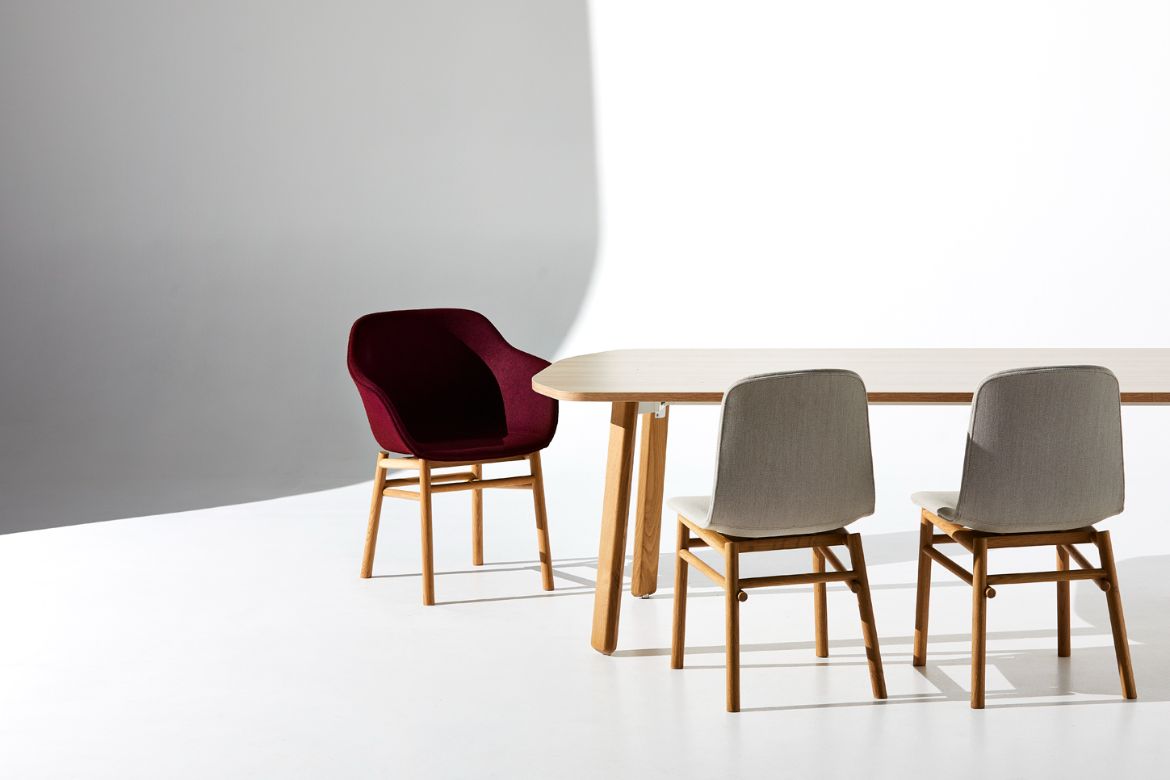
Kissen table with Jac chairs. Photography: Pablo Martin.
JH: Can you talk to me a little about the Denn chair?
OF: The Denn chair is a very significant product for Zenith. It is the first time we have manufactured our own task chair. We partnered with Formway at the beginning of the design phase and have developed the chair together. It has been a very lovely creative partnership. As a task chair, there are many complexities to overcome to achieve the high level of craftsmanship and performance. Again, we have leveraged the idea of creating a family. Denn includes drafting chairs, two different arm styles, an executive version, and a large array of colours.
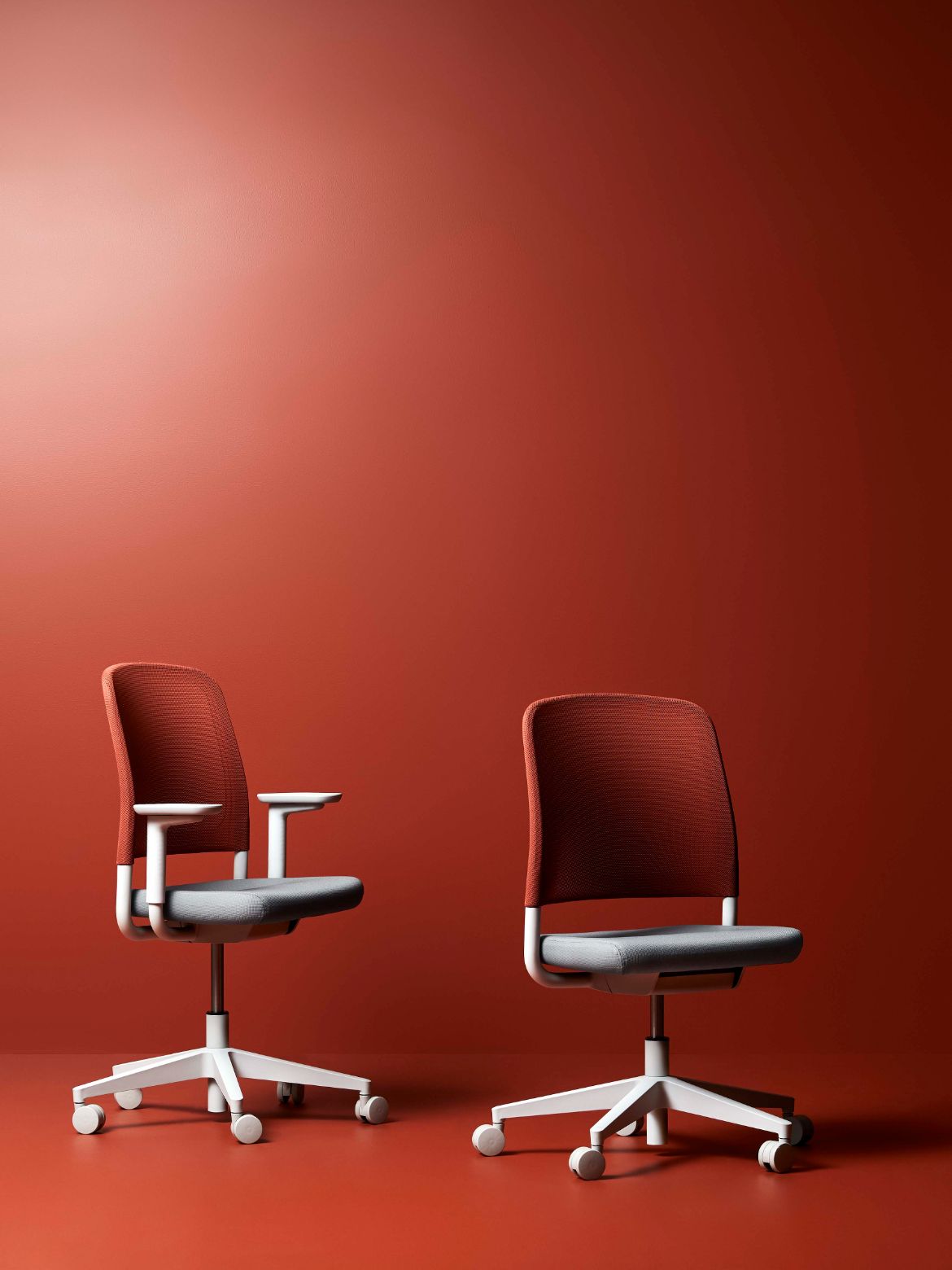
Denn chair. Photography: Haydn Cattach.
JH: What about designing for the future here and now and beyond. What role is technology playing?
OF: We are now in a very exciting time to be designing workplace furniture. What I could only sketch as ideas 10 years ago is now a reality. At Zenith we are integrating technology into more of our products.
We believe that the micro grid workplace will become part of ‘the new normal’. This is all about using low voltage energy and batteries to increase productivity and empower people to work in ways that are unhindered by cables and the rigidity of pre-configured workstations. This is a big idea that we think can have a very positive impact.
For example, our battery powered desks can supercharge the multipurpose nature of a room. Or, it can enable a heritage building to be powered without the need to dig up the floor or wall for power cables. It can also save organisations money, because they can take their power with them if they move offices. There is also a strong environmental story. Battery powered furniture can be used in DC (or low voltage) buildings which can dramatically lower the amount of energy loss in the inverting process. We are very excited about this low voltage future.
JH: Throughout Covid what were you doing? How did the pandemic affect the studio and did you slow down?
OF: During the disruption of covid, our new product team did not reduce our hours. It was a very productive time, creatively speaking. It was a great time to re-evaluate what the office will become, and what role our products play in that future office.
We did have to move quickly to respond. For example, we looked at ways that connected systems could work harder to keep people safe in the workplace. With our product called Zenith Connect Puck, we added a feature, a coloured light, that indicated if the desk had been sanitised or not. Another feature was contact tracing through the booking system. These features were used heavily and received very well.
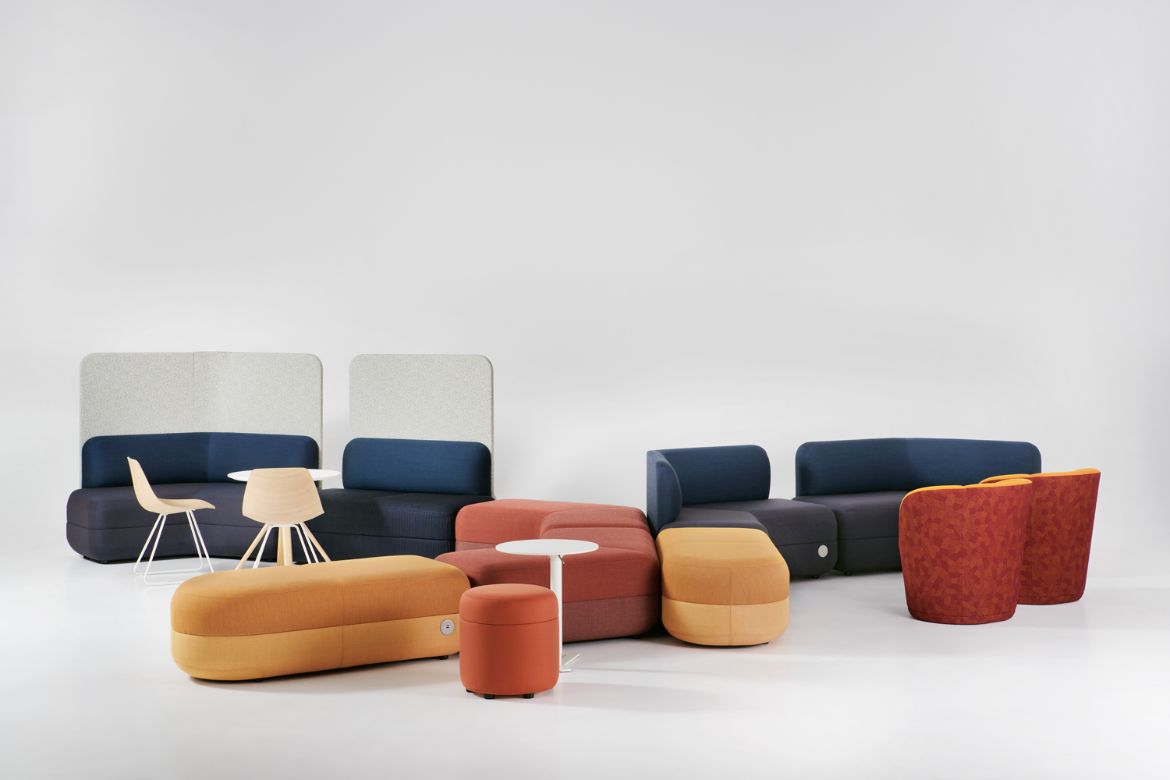
Precinct Seating. Photography: Fiona Susanto.
JH: Do you think because of Covid you are more advanced in design ideas today?
OF: Honestly, from purely a design perspective, Covid was the shake-up that needed to happen. In the workplace, it has really forced companies to look at how work is done. For us, we are in the business of creating workplace furniture, we are now in a time of openness to new design possibilities.
JH: And Oliver I know that sustainability is important, in fact integral to Zenith. Can you talk about how sustainability guides your business, the designs created and the customer experience?
OF: Yes. Zenith is in the business of making, so we also need to be in the business of reducing. We have several great initiatives that are making a positive impact. For example, many people may be aware of our tree planting program which is associated with our JAC chair range. A tree is planted for every chair sold, so at the moment some 60,000 trees have been planted and counting.
Another example is our Denn chair, with over 55 per cent recycled content. These types of initiatives do make a difference.
Small changes also make a big difference, especially working for large companies like Zenith. For example, we’re working hard to reduce the plastic consumed in shipping our products. We design our own cardboard packaging, taking care to use a single material for the entire package. We also use plant-based ink for our packaging.
Personally, I enjoy being in a position where we can influence the company to keep doing more.
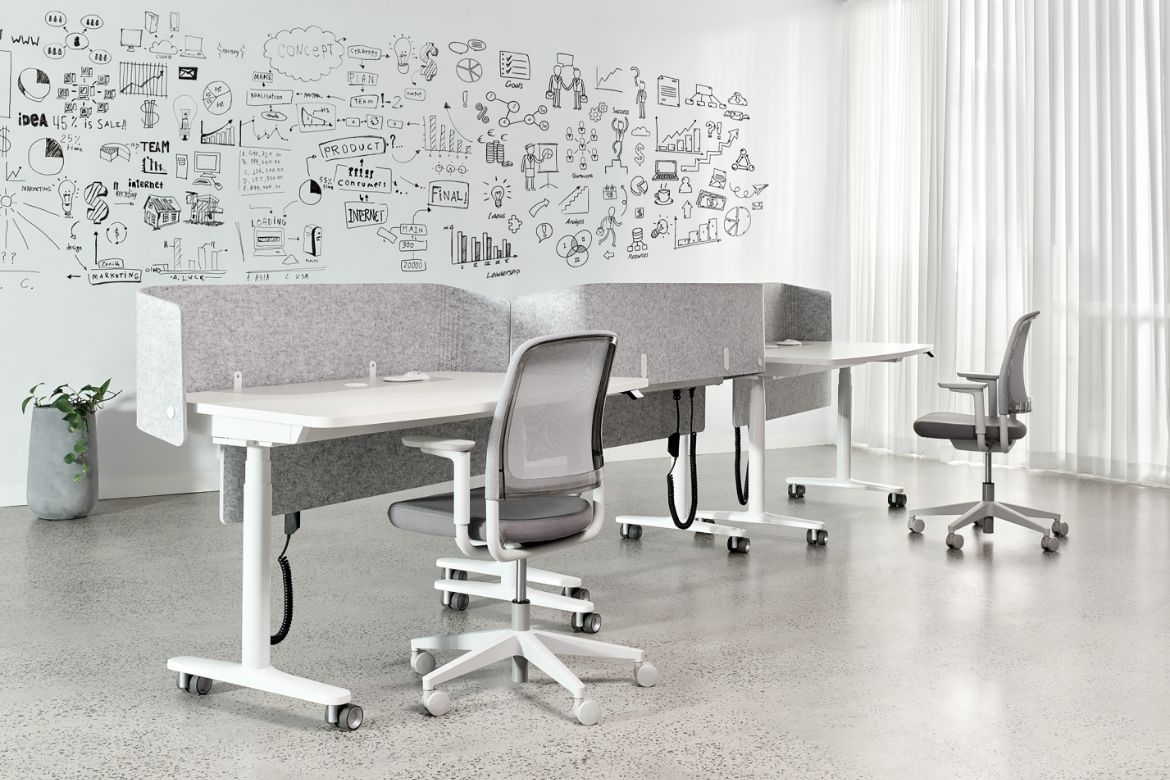
Orbis Adapt with Denn. Photography: Haydn Cattach.
JH: What exactly does this mean for different countries and the products they choose and the way in which they use them? Do you change the design for the market in Shanghai or Singapore versus Melbourne or Auckland? Does one size fit all or do you need to change or adjust designs for different countries?
OF: No, one size definitely doesn’t fit all. We have honed our design and engineering thinking to align with what we call, ‘open engineering’. This idea allows us to create large families of products that instil an identical design language, however, can be configured in ways that align with the unique needs of each region.
For example, cable reticulation is by far the biggest challenge for us to localise in a single design. We must consider the different outlet types, suppliers and preferences. For a table system like Estate, we achieved this by creating a platform of varying cable management options that all fit within the same structural frame. The product can then be configured and specified depending on each region.
JH: What is next in design from Zenith? If we are thinking that the future has arrived, where do we go from here?
OF: At Zenith, we will continue to deliver products that make life better. For us, this means using design to make healthier workplaces which deliver better experiences for all who interact with our products.
It’s good to see that innovation and technology, creativity and sustainability are firmly in the sights of the designers and manufacturers at Zenith. When it comes to living better now and for the future, Zenith is leading the way.
The full interview can be viewed here along with all sessions from the 2023 INDE.summit.
